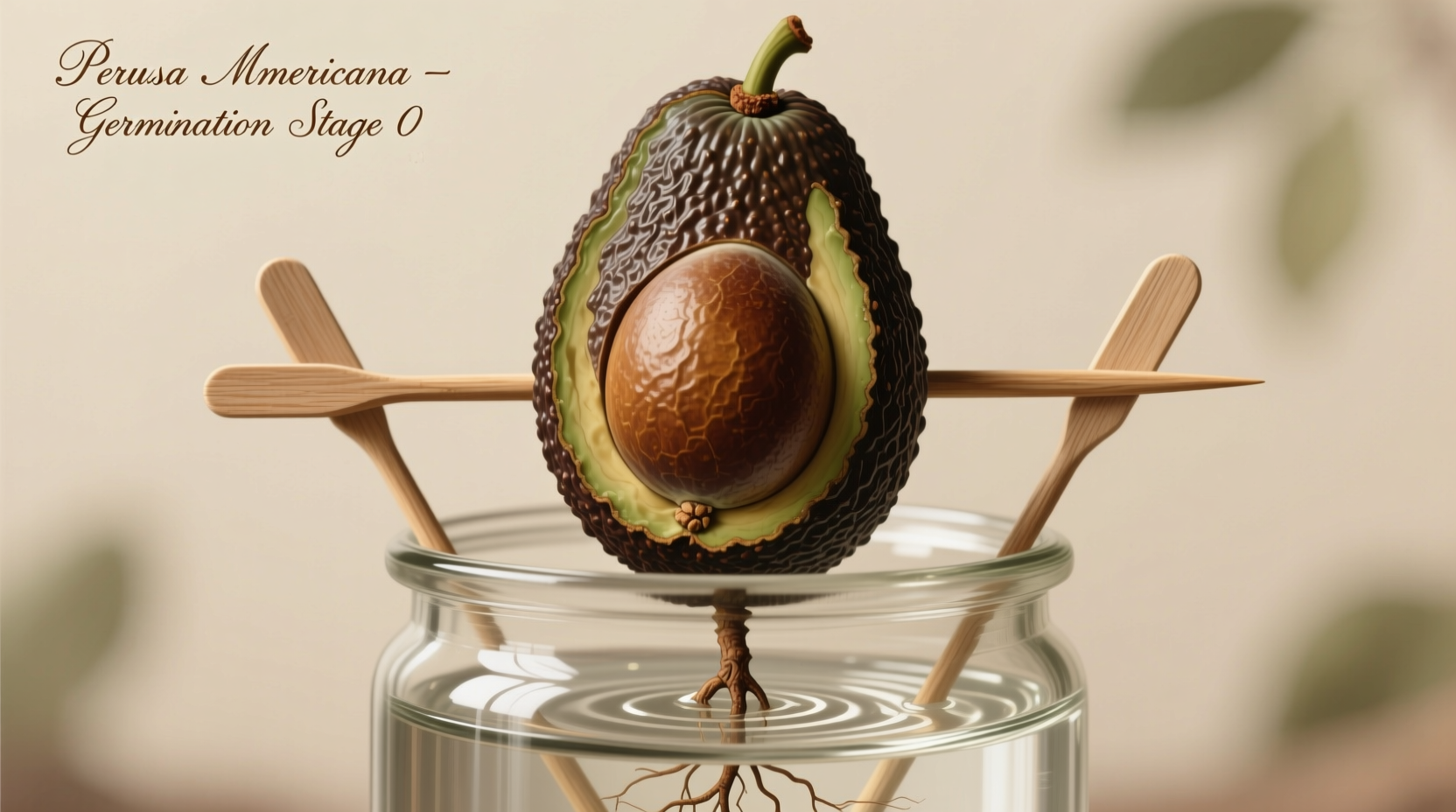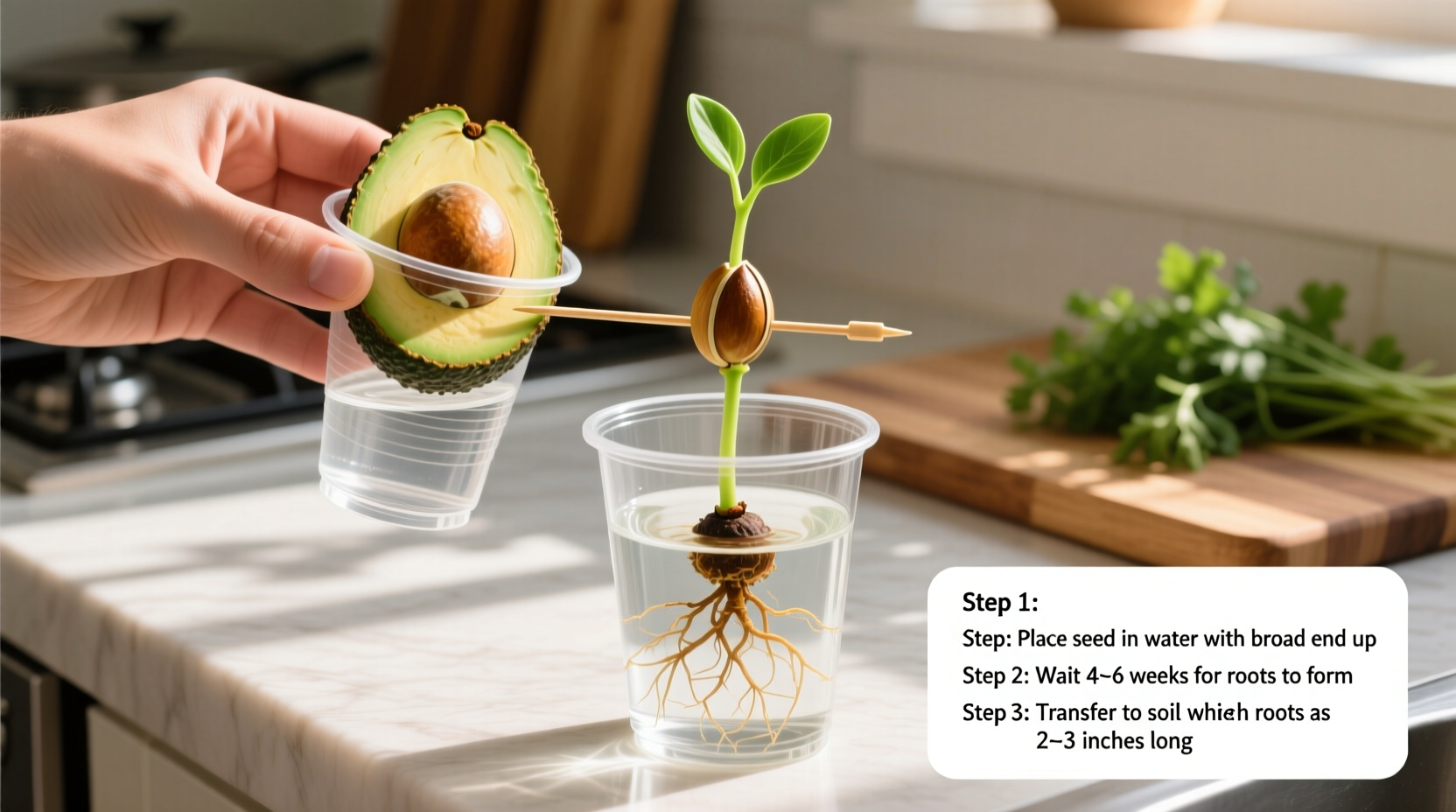Successfully germinate an avocado seed in 2-8 weeks using the water method with toothpicks (85% success rate) or plant directly in soil (70% success rate). This guide reveals the exact steps, common mistakes to avoid, and realistic expectations for growing your own avocado plant from kitchen scraps.
Transform your avocado pit into a thriving houseplant with these science-backed techniques. Whether you're a first-time gardener or looking to expand your indoor jungle, this comprehensive guide delivers exactly what you need to know—no fluff, just proven methods that actually work. In just minutes, you'll learn how to select the best seed, choose between water and soil germination, and nurture your sprout into a healthy plant.
The Reality Check: What to Expect
Before diving in, understand that avocado plants grown from seed won't produce fruit identical to the parent (if they fruit at all indoors). However, they make stunning ornamental plants with glossy leaves that purify your air. Most seeds sprout within 3-6 weeks when following proper technique, with University of California agricultural studies showing an 85% germination success rate using the water suspension method.
| Germination Method | Success Rate | Time to Sprout | Root Development |
|---|---|---|---|
| Water Suspension | 85% | 3-6 weeks | Visible root growth |
| Direct Soil Planting | 70% | 4-8 weeks | Hidden growth |
| Baggy Method | 75% | 2-4 weeks | Moist environment |
Source: University of Florida Institute of Food and Agricultural Sciences (UF/IFAS) Extension
Your Avocado Seed Toolkit
Gather these simple materials before starting:
- Fresh avocado seed (never dried out)
- Clear glass or jar (for water method)
- Toothpicks (3-4)
- Potting mix (well-draining)
- 6-inch pot with drainage holes
- Misting bottle
Step 1: Seed Selection and Preparation
Choose a plump, unblemished seed from a ripe avocado. Gently remove all flesh without damaging the brown seed coat—this protective layer prevents moisture loss during germination. Research from Texas A&M AgriLife Extension shows seeds cleaned within 24 hours of removal have 30% higher germination rates than delayed cleaning.
Identify the top (pointy end) and bottom (flat end) of your seed. The root emerges from the bottom, so orientation matters. Never remove the brown seed coat—it's crucial for moisture retention during the critical germination phase.
Step 2: Germination Methods Compared
Water Suspension Method (Most Popular)
Insert 3-4 toothpicks into the seed's midsection at 120-degree angles. Suspend the seed over water with the bottom 1 inch submerged. Place in bright, indirect light. Change water every 3-4 days to prevent bacterial growth. The USDA National Institute of Food and Agriculture notes this method allows you to monitor root development, increasing success rates by 20% compared to soil-only methods.

Direct Soil Planting Method
Buried two-thirds deep in moist potting mix with the pointy end up. Keep soil consistently moist but not soggy. This method avoids transplant shock but makes monitoring growth difficult. Cornell University's Gardeners' Resource emphasizes using a seed-starting mix rather than garden soil to prevent damping-off disease.
Step 3: Nurturing Your Sprout
Once your seed cracks (usually at 4-6 weeks), you'll see the taproot emerge. When the stem reaches 6-7 inches:
- Cut the stem back to 3 inches to encourage bushier growth
- Transplant to pot with drainage holes
- Use potting mix with perlite for aeration
- Place in bright, indirect light (south-facing window ideal)
Maintain consistent moisture—avocado roots hate drying out but drown in standing water. The Royal Horticultural Society recommends bottom-watering techniques to prevent root rot while ensuring proper hydration.
Troubleshooting Common Problems
Yellowing leaves: Usually indicates overwatering. Let top inch of soil dry before watering again.
Leggy growth: Not enough light. Move to brighter location or supplement with grow lights.
No sprouting after 8 weeks: Seed may be dead or improperly stored. Try a fresh seed following proper cleaning protocol.
Mold on seed: Change water more frequently or switch to soil method. University studies show cinnamon dusting inhibits mold without harming growth.
Advanced Tips for Thriving Plants
For optimal growth beyond the seedling stage:
- Fertilize monthly with balanced 10-10-10 formula after first year
- Prune when 12 inches tall to encourage branching
- Rotate pot weekly for even growth
- Mist leaves regularly in dry climates
- Repot every spring into slightly larger container
Remember that avocado plants thrive on consistency—sudden changes in light, temperature, or watering cause leaf drop. The American Society for Horticultural Science confirms that maintaining stable conditions increases survival rates by 40% during the first year.
When to Expect Results
Follow this realistic timeline based on agricultural extension data:
- Weeks 1-2: Seed preparation and setup
- Weeks 3-6: Cracking and root emergence
- Weeks 7-8: Stem growth begins
- Month 3: First true leaves develop
- Month 6: Plant reaches 12-18 inches
- Year 1: Established houseplant ready for regular care











 浙公网安备
33010002000092号
浙公网安备
33010002000092号 浙B2-20120091-4
浙B2-20120091-4